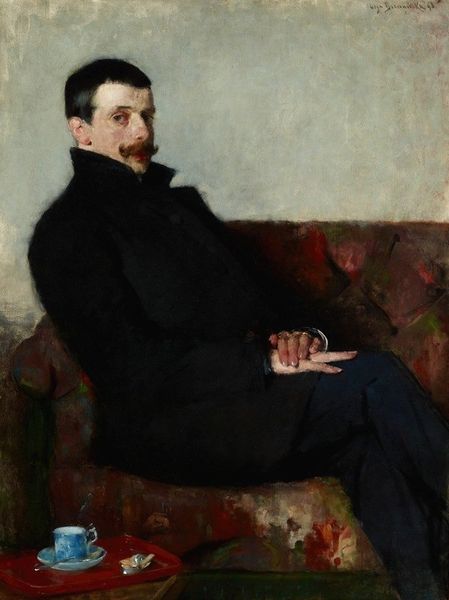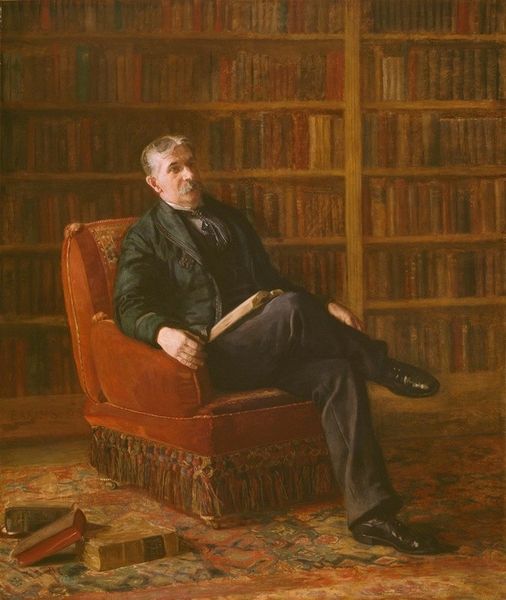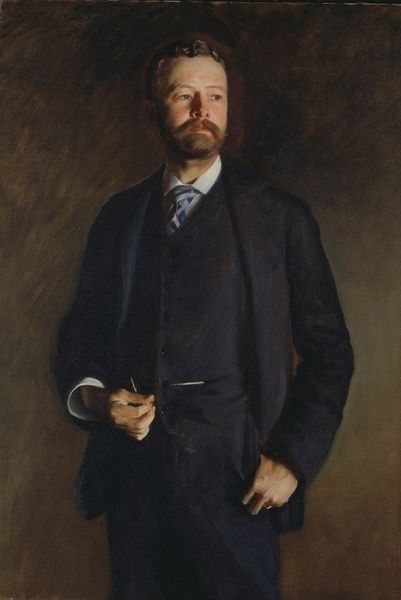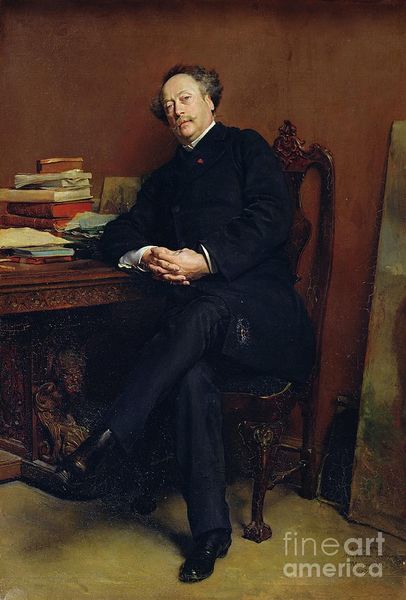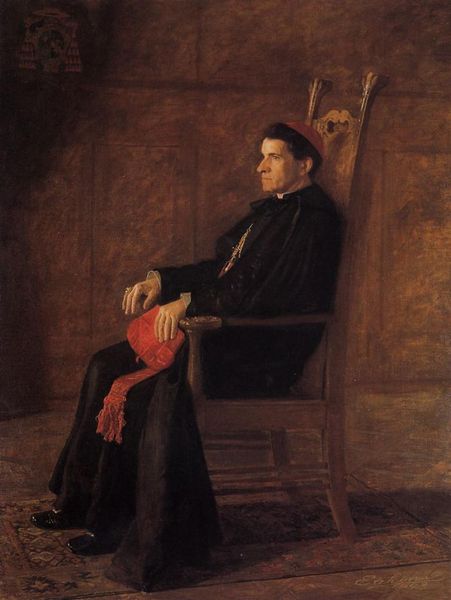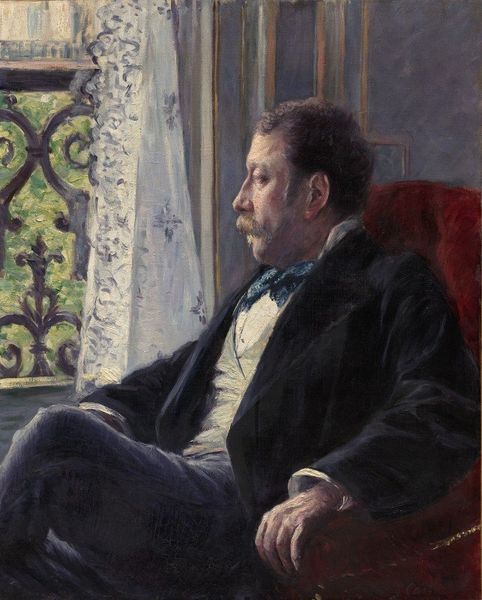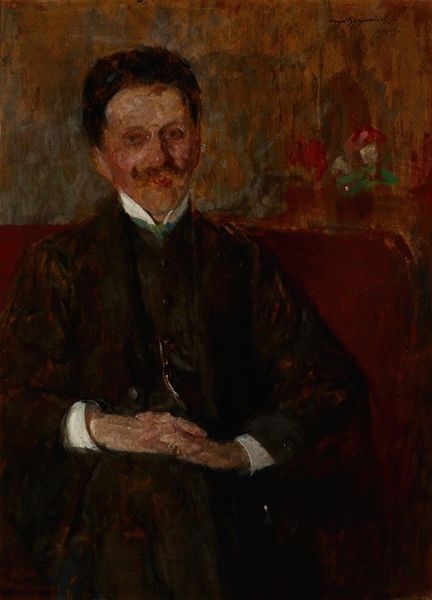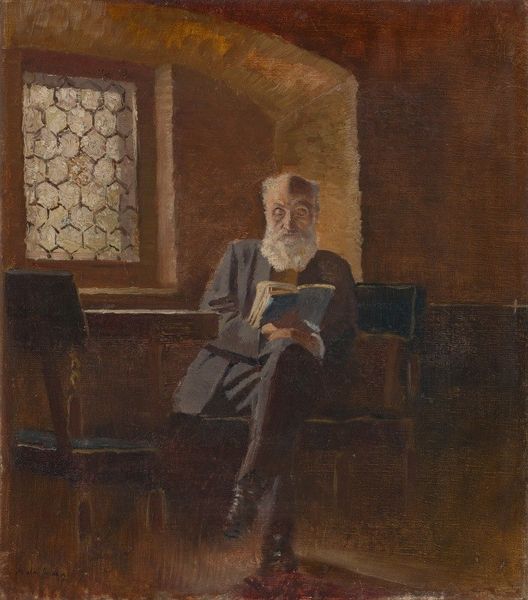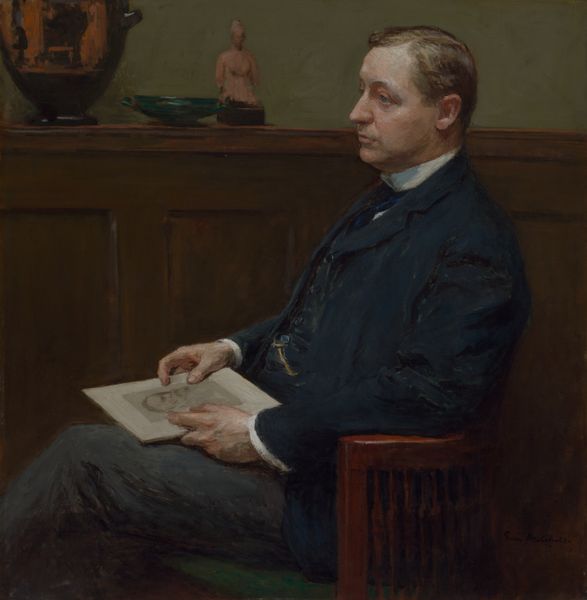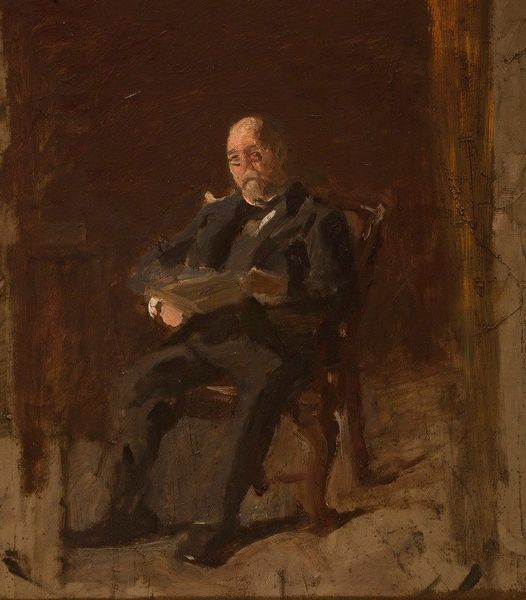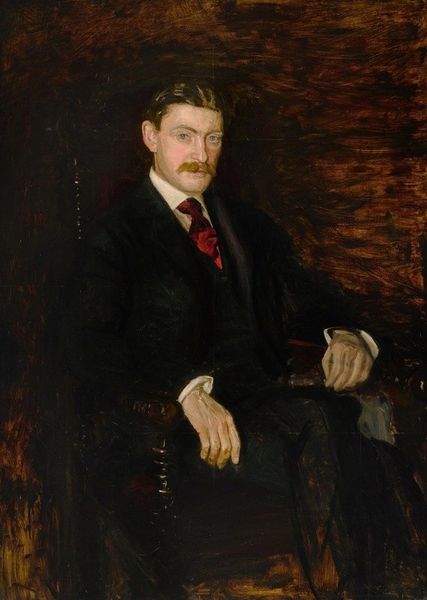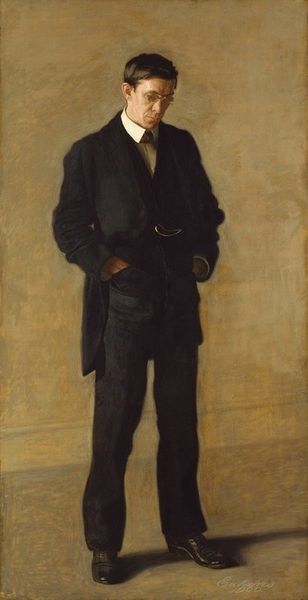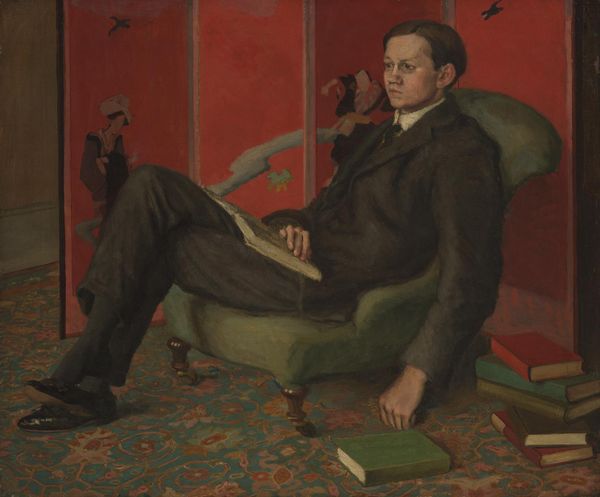
Dimensions: 50.8 x 61.28 cm
Copyright: Public domain
Curator: Thomas Eakins’ portrait of Frank Jay St. John, painted around 1900, catches the eye. Look at the pose; it suggests both ease and perhaps a touch of melancholy, doesn't it? Editor: Immediately, I’m struck by the man’s detachment. The way he's positioned, leaning back, leg crossed, almost feels performative. Who was this St. John, and why this presentation of controlled disinterest? Curator: Good question! As an artist, I find myself drawn to the nuances of light and shadow playing across his face. Notice how Eakins uses subtle brushstrokes to capture the texture of his jacket and the patterned rug beneath the chair. He must have spent quite a while on that rug, the painting style is amazing. Editor: It is quite the rug! Beyond the skill, though, I see a reinforcement of class and power. The rug, the tailored suit, even the casually placed hat… they’re all signifiers of a certain societal standing. What statement does the artist make by portraying him within these boundaries of wealth? Curator: Or perhaps a subtle dig? He appears relaxed, but there's a certain tension in his eyes. And that dark suit and his dark hat, I wonder, do they echo that melancholy I feel? There are all sorts of theories as to whether Thomas Eakins painted with sympathy or the contrary. Editor: That "tension" may reveal the restrictions placed on men during this era, which this image reproduces and almost venerates. We see an idealized version of manhood tied to status and reserved emotion, something we continue to unpack and resist even today. I think his hand holding that hat on his leg feels somewhat theatrical. Curator: That's quite interesting to note! The "theatricality" almost feels too studied somehow. It is not really natural! And that background does not provide us with much information; he has his back to a wall, not against a colorful landscape or anything that tells us more about who he is. Editor: Right! Eakins gives us just enough information, withholding, or perhaps obscuring St. John’s complete self. He offers a meditation on masculinity during a moment of massive transformation. How fascinating to consider this piece as both a marker of and an intervention into that historical turning point. Curator: Looking closely and listening to what you are saying has really made me consider this as more than a masterful exercise in Realist portraiture! There is an undercurrent that moves this piece away from simple representation, towards cultural observation. Thank you for providing us with some useful food for thought!
Comments
No comments
Be the first to comment and join the conversation on the ultimate creative platform.
